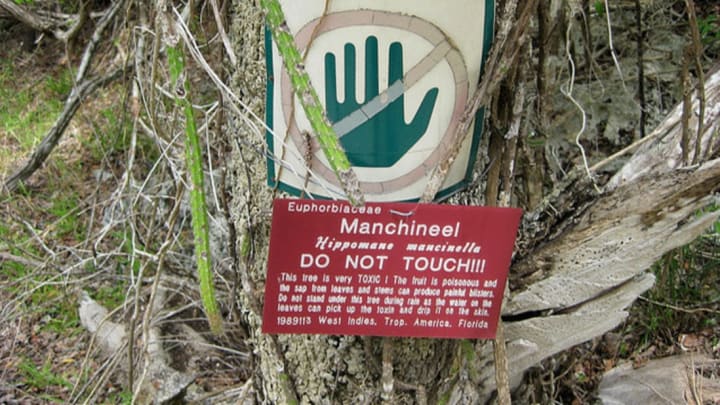The 'Tree of Death' Lives Up to Its Name

At first glance, there’s nothing particularly menacing about the manchineel tree. Until you touch its bark or taste its fruit—which could leave you ill, injured, or even worse—you'd never know how it got its nickname: The Tree of Death.
IFLScience recently took a closer look at Hippomane mancinella, which was first dubbed arbor de la muerte, or “tree of death," by Spanish conquistadors. The tree is native to northern South America, the Galápagos, the Bahamas, the Caribbean, and even Florida, and it’s common to find signs posted on the trees warning passersby against touching it—which can leave chemical burns on your skin—or ingesting its fruit, which is toxic. Of all the toxins in the tree, its most notorious component is the organic compound phorbol, which can be found everywhere from its bark to its sap.
Barry Stock via Flickr // CC BY-SA 2.0
The tree's small, sweet-smelling green fruits, nicknamed “death apples,” are known to strike whomever eats them with diarrhea, seizures, and severe vomiting. At the turn of the 2000s, consultant radiologist Nicola Strickland wrote about her experience mistaking one of these fruits for a crab apple while on vacation in Tobago. After she and her friend each took a small bite, their mouths started to burn and their throats began to swell shut. They also developed a serious pain in their necks as their lymph nodes were infiltrated by the toxins. They survived—but only because they took such tiny bites.
[h/t IFLScience]